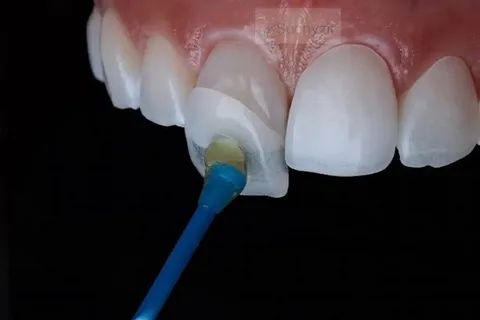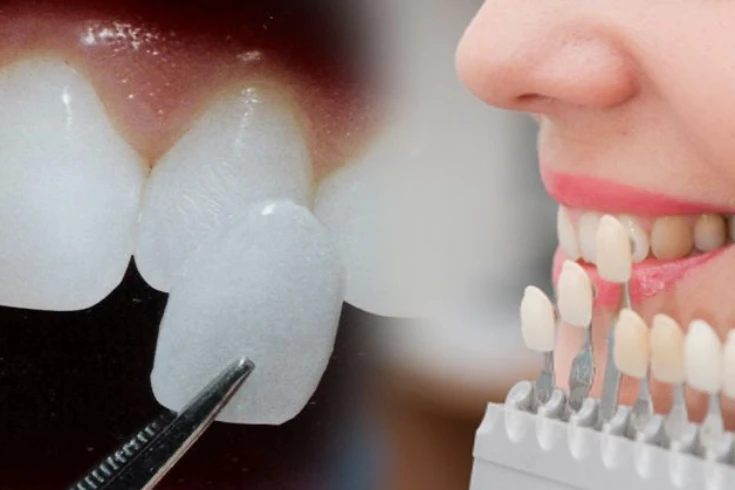A root canal is the most popular dental treatment used to save an extremely damaged tooth that’s in a state of severe decay and infection. As common as it might be among dental treatments, patients do have questions about the procedure and how long it will take. Depending on the type of tooth, the number of canals inside, and whether further restorative work is needed, some root canal can take longer than others.
From how long the procedure of a root canal takes to what factors affect the duration of such procedures, an estimation of the time required for different types of teeth, to what one should expect during and after the dental procedure. This comprehensive guide shall look at it all.
How Long Does a Root Canal Take?
A simple root canal with only one canal takes about 30 to 60 minutes. It takes as long as 90 minutes or more in some complicated cases, like when a molar with several canals is treated. The time spent in the dentist’s chair is not solely drilling and filling but preparation, anesthesia, and explicit cleaning and sealing of the tooth.
Here is an overview of why the procedure can be so time-consuming in a root canal treatment:
- Preparation: The dentist administers local anesthesia to numb the area and sets up the instruments to perform the procedure.
- Pulp Removal: Damaged or infected pulp and nerve are delicately taken out of the tooth canals.
- Cleaning and Disinfecting: These canals are cleaned and disinfected to remove all bacteria and prevent any future infection.
- Filling and Sealing: The cleaned canals are filled with a biocompatible material, and the tooth is sealed to protect it from further damage.
Factors Affecting the Length of a Root Canal
A variety of factors will affect the length of your root canal appointment, including:
- Location of the tooth
- Front Teeth (Incisors and Canines): These teeth usually have only one canal, so the procedure is quicker and easier.
- Premolars: These teeth usually contain one or two canals and take a little longer compared to the anterior teeth.
- Molars: Since molars are located in the back of the mouth, they have three or four canals. They require the maximum amount of time during treatment.
- Anatomy Complexity: Some teeth have narrow or curved canals. These are difficult to clean and fill; therefore, the duration of the procedure could take more time.
- Severity of the Infection or Damage: This procedure will take more time if the tooth is badly infected or seriously damaged.
- Crown Placement: If your dentist places a crown the same day, the root canal process can take much longer.
- Dentist Expertise: A seasoned dentist or an endodontist might finish the procedure faster than one with less experience.
- Utilization of Advanced Technology: Techniques and equipment like digital imagery, ultrasonic cleaners, and in-office crown creation can expedite the process.
How Long does a root canal take?
The type of tooth treated would play a major role in determining how long it takes for the root canal procedure. A breakdown based on the kind of tooth is done thus:
Molars
Molars are the most complicated to treat because many of them have three to four canals. Extraction of the nerve, cleaning, disinfection, and filing of the canals take more than an hour; therefore, the whole process could take well over 90 minutes. The root structure of the molars is more complicated and requires additional care and precision.
Premolars
The premolars are usually found between your molars and front teeth. These teeth usually have one or two canals. The Premolars take an estimated 60 to 75 minutes to perform a root canal in a premolar due to the anatomy of the tooth and the extent of the damage or infection.
Canines and Incisors
Front teeth-canines and incisors-are the quickest to treat. These teeth typically have only one straightforward canal. This makes the procedure less challenging. In general, this type of treatment on such teeth takes approximately 30 to 60 minutes. However, this estimate of time could be higher in the case of any anomalous anatomy in the tooth or if additional restorations are required.
Crown Placement: Same-Day or Later?
Almost all root canal-treated teeth require a crown to recover their strength and function. Placing a dental crown at any time depends on your dentist’s philosophy and the status of your tooth.
- Same Day Crowns: If your dentist has the technology to make crowns in their office, they may fabricate and install the crown in the same visit. This adds 60 to 90 minutes more to the procedure.
- Delayed Crowns: Permanent crown application usually occurs in subsequent visits. Many dentists would not fit the crown until some days or weeks have elapsed to ensure that no complications arise and that the tooth has actually settled down. So one or two visits are not enough for the crown placement.
Why Does a Root Canal Take Time?
A root canal is done in a very detailed way. The dentists have to remove all the infected tissue, clean the canals, and seal them to prevent further reinfection. Here is a breakdown of the key steps:
- Preparation and Anesthesia: The dentist anesthetizes the area with local anesthesia and isolates the tooth by using a dental dam to keep it dry and saliva-free.
- Accessing the Tooth: A small access hole is drilled into the tooth for access to the pulp chamber and root canals.
- Remove the pulp: Next, using some specialized instruments, the dentist will remove the damaged or infected pulp and nerves.
- Smoothening and Shaping the Canals: The canals will be cleaned and disinfected and shaped in preparation for filling. This step is rather time-consuming when there is more than one canal within the teeth.
- Filling and Sealing: The cleaned canals or tooth will be filled with a biocompatible material, gutta-percha, and sealed with adhesive cement.
- Temporary or Permanent Restoration: A temporary filling is placed to protect the tooth until a permanent crown is fitted.
Some Tips to Prepare for Your Root Canal Appointment
- Ask Questions: Discuss with your dentist what you may expect during the procedure and the estimated time that the procedure will take along with any after-care instructions.
- Schedule Enough Time: Give yourself some extra time for the appointment to accommodate any delays or complications that may arise.
- Relax Before the Procedure: Try deep breathing exercises or listen to soothing music before.
- Care After the Procedure: Follow your dentist’s recommendations following the root canal to prevent complications and properly care for the treated tooth.
Why a Root Canal Is Worth the Time?
Some people are sometimes put off by the commitment of time it takes to undergo a root canal, but that is truly worth the benefit of retaining your oral health. Here’s why spending the time on a root canal is worth your while:
Saves Your Natural Tooth
The purpose of a root canal is primarily for the salvation of your natural tooth. In comparison to the supposedly quicker method of tooth extraction, the long-term implications in losing a tooth include the movement of teeth, dental occlusion, or malocclusion, and eventually the much more expensive replacements involving bridges or implants. A saved natural tooth by itself keeps your smile whole and your oral health intact.
Prevents Infection from Spreading
A tooth infection, if left unaddressed, can lead to very serious further complications such as abscesses, gum diseases, and even systemic infections of other parts of the body. A root canal involves removing the infected tissue, disinfecting the tooth, then sealing it to prevent the spread of bacteria and further compromising your dental and general health.
Long-Term Relief
These are time-consuming and patience-requiring procedures, but root canals eliminate the pain caused by such an infected tooth. Since treatment targets the root cause of the problem, it’s effective for a longer period and assures you that you can eat, speak, and smile without discomfort.
Cost-Effective Compared to Alternatives
For although a root canal might be expensive at first sight, it will be cheaper compared to tooth extraction and its subsequent replacements with dentures, bridges, or implants. This involves additional procedures, materials, and frequent adjustments that make the root canal an economically friendly choice.
Maintains Jawbone Health
Whenever a tooth is extracted, the section of the jawbone starts to degenerate due to a lack of stimulation. A root canal allows you to keep your natural tooth, which will help in maintaining the structure and density of your jawbone, therefore preventing further complications of oral health.
Aesthetics
A crown or filling after a root canal usually restores the appearance of the treated tooth. This will keep your smile natural and beautiful, confident, and without the need for replacements or artificial teeth.
Modern Techniques Make It More Comfortable
Advancements in dental technologies, such as digital imaging, rotary tools, and more precise anesthetics, have made root canals more comfortable and efficient. Dentists can now do the procedure with very minimal discomfort; the recovery time is also pretty short for most patients.
Prevents Future Dental Complications
Removing the pulp and sealing the tooth prevents future complications such as recurring infections of the pulp or retreatment of the tooth, hence saving one from always going to the dentist for the same problem.
Retains Full Functionality of the Tooth
A tooth with a crown treated this way is as functional as any other natural tooth. You can comfortably and safely bite, chew, and eat your favorite foods without limitation; hence, this makes the root canal a practical solution to continue with tooth functionality.
Conclusion
Depending on the location, anatomy, and complexity of the tooth, a root canal may take more time than others. Whether that means it is a 30-minute procedure for a front tooth or a 90-minute treatment for a molar, the goal of this treatment is always the same to save the tooth in question and restore its function. As long as it may seem, thanks to modern dental advances, root canals are quicker, easier, and more comfortable than ever. Consult your dentist for a more personalized estimate, as well as to understand the procedure if you are at risk of a root canal.
FAQ’s
Why does a root canal take so much time?
The procedure is detailed and involves preparation, pulp removal, cleaning and disinfecting the canals, filling, and sealing the tooth. Each step ensures the tooth is treated thoroughly to prevent future infections.
What is the role of a crown in root canal treatment?
A crown helps restore the tooth’s strength and function after a root canal. Crowns can be placed on the same day (if the dentist has in-office crown fabrication technology) or in a subsequent visit.
Can a root canal be completed in one visit?
Yes, many root canals can be completed in one visit. However, if the tooth is severely infected or complex, multiple visits may be required.
How long does a root canal take for premolars?
Root canal treatment for premolars, which often have one or two canals, takes approximately 60 to 75 minutes.
How long does a root canal take for molars?
Root canals for molars, which can have three or four canals, usually take 90 minutes or more due to the complexity of the tooth’s anatomy.





